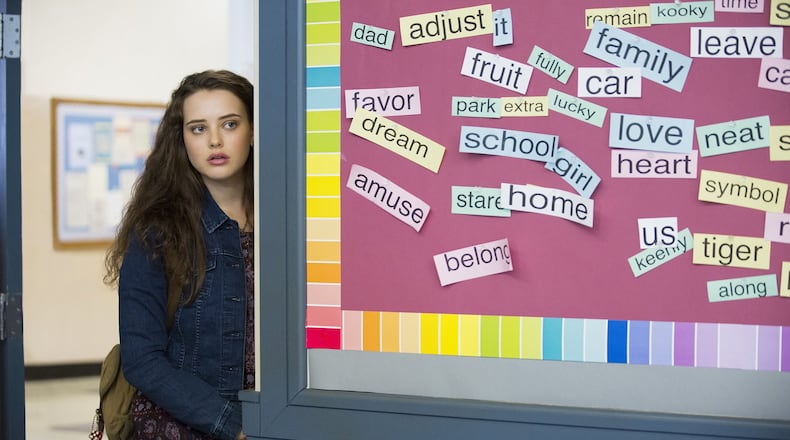You notice Stephanie Ball’s eyes brighten the moment there’s any mention of her toolbox.
For years before she discovered Grady's Nia Project, Ball couldn't think of one reason why she should live. It seemed everyone she encountered, she said, "used me up, then spit me out."
After years of abuse — physical, mental and sexual — Ball felt not just useless, she felt hopeless, too.
But the day the 50-year-old mother of two began collecting mementos, little reminders of why her life meant something — an Atlanta Symphony CD, an aromatherapy candleholder, a feather — that began to change. Now when suicidal thoughts pay her a visit, Ball gets her box out and counts her blessings.
That would not have happened, she said, without the Nia Project founded more than 20 years ago by Emory psychologist Nadine Kaslow, who'd seen far too many African-American women like Ball attempt suicide.
Since launching the suicide prevention program in 1992, Kaslow estimates about 3,000 women have sought help.
“Sometimes we hear about them and reach out to them, and sometimes they hear about us and show up,” Kaslow said.
Either way, about 200 women, aged 18-64, are involved in the program at any given time. Some suffer from mental illness, but the majority are survivors of domestic violence. All of them have attempted suicide at one time or another, but the vast majority have tried multiple times like Ball.
Kaslow said she noticed early on that women who were in abusive relationships were two to three times more likely to attempt suicide than women with no history of domestic violence.
She and her colleagues were studying that connection when participants in the study knocked on her door one day and asked, “Why are you studying us instead of helping us?”
It was then, Kaslow said, that the Nia Project was born.
The project, housed in a 13th-floor conference room at Grady, offers individual and group, couple and family therapy, crisis intervention and community outreach and support. It also has a research component that determines the effectiveness of culturally relevant group interventions for abused and suicidal African-American women.
“Our overall mission is to help women find purpose and meaning in their lives and lead violence-free lives,” Kaslow said. “We’ve found that if you help women feel better about themselves and empower them to take control of their lives, over time they begin to realize they have reason to live and often are able to extricate themselves from abusive relationships.”
Although suicide rates historically have been lower among African-Americans than among whites of any age, that’s sadly changing. Suicide has become the third-leading cause of death among black men and women between the ages of 15 and 24. This trend shows how over at least the past decade, social and mental health problems have been quietly chipping away at black youths.
Still, in many black communities, experts say mental health remains a deeply stigmatized “white people problem,” or a personal weakness, rather than an illness. Little, they say, is being done to shift that perception.
But there is a downside, said Sarah Dunn, Ball’s therapist and clinical director of the Nia Project. Not only does “13 Reasons Why” glorify suicide and place the blame on others, it can be traumatizing for people to watch, which is concerning especially since it comes on the heels of recent Facebook Live suicides that have already traumatized people.
The series, which is based on a 2007 novel of the same name by Jay Asher, follows the aftermath of teenager Hannah Baker’s suicide. It is scheduled to return for a second season.
Because of the concern expressed by many mental health experts that the show is inaccurate and potentially dangerous, especially to vulnerable students, Netflix has added a warning to the start of each episode.
Ball was an eighth-grader at Druid Hills Middle School when she swallowed a bottle of Tylenol to end her life. Until 2009, she would try 29 more times, even downing pills during Nia group sessions.
“She was a tough case,” Kaslow said of Ball. “When she made the decision to get better, she took off. She got sober and started to take her therapy very seriously. She married a wonderful man. She went from being a challenge to being a star.”
Dunn, along with Kaslow, encouraged and supported her along the way, Ball said. They helped her see what they saw when they interacted with her. They saw her intelligence, strength and resilience.
“13 Reasons Why” details why a young girl chose to kill herself, but what we really ought to be talking about is all the reasons why she mattered, why the people in our lives matter, and about why all of us would be better off psychologically if we were more compassionate and respectful of each other.
“We all struggle,” Kaslow said. “Whether or not you get a diagnosis, everybody goes through periods of feeling down or afraid, but we need to encourage people to talk, get support, and get professional help.”
If you can’t bring yourself to do that, try filling your toolbox with 13 reasons to live — a photo of your kids, a birthday card, a letter, or something else that brings you comfort or pleasure.
If nothing else, please try to remember that tough spots are always temporary and that life always get better.
Just ask Stephanie Ball.
SUICIDE PREVENTION
National Suicide Prevention Lifeline, 1-800-273-8255
Georgia Crisis and Access Line, 1-800-715-4225
About the Author
Keep Reading
The Latest
Featured





